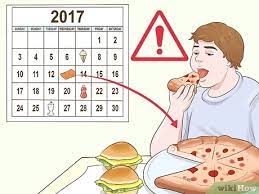How to Wire an Electric Cooker: 14 Steps

Introduction
Wiring an electric cooker may seem like a daunting task, but with the right guidance and safety precautions, it can be a straightforward DIY project. In this article, we will walk you through the 14 steps needed to wire an electric cooker safely and efficiently.
1. Gather your materials and tools
Before starting the wiring process, make sure you have the following items:
– Screwdriver
– Wire stripper
– Voltage tester
– Terminal block
– Cable
– Cable clips
2. Turn off the power supply
The first rule of working with electricity is safety. Switch off the main breaker or remove the fuse for the circuit where your cooker will be installed.
3. Consult the manufacturer’s instructions
Different cookers have specific wiring requirements, so refer to the instruction manual that came with your appliance.
4. Determine cable size and type
Check the manufacturer’s instructions for the appropriate cable size and type. This is crucial because using an inadequate cable can potentially lead to fires or damage your appliance.
5. Position your cooker
Place your cooker in its desired location, ensuring it is level and secure on the floor.
6. Measure cable length
Based on your cooker’s position, measure how much cable you’ll need to reach from your cooker terminal block to the electrical circuit connection point.
7. Prepare your cable
Using a wire stripper, remove approximately two inches of sheath from each end of your cable to expose live, neutral, and earth wires.
8. Connect your cable to the terminal block
Connect each colored wire to its corresponding terminal on the terminal block according to the Manufacturer’s guide:
– Brown (live) goes into L terminal
– Blue (neutral) goes into N terminal
– Green/Yellow (earth) goes into E terminal
9. Secure connections with screws
Tighten each screw on each connected wire in the terminal block, ensuring it is secured properly.
10. Install cable clips
Use cable clips to secure the cable along its path towards your electrical supply connection point, ensuring it is neatly tucked away and not at risk of accidental damage or wear.
11. Turn off power to the consumer unit
Ensure that no power is flowing to your circuit board while connecting the electric cooker.
12. Connect the cable to your circuit
Similar to the terminal block, connect each colored wire to its corresponding terminal in your consumer unit:
– Brown (live) goes into a designated spot for your cooker
– Blue (neutral) connects with the neutral bus bar
– Green/Yellow (earth) connects with the earth bus bar
13. Restore power supply
Once all connections have been made, restore power to both your circuit and main power supply.
14. Test your cooker
Before using your cooker normally, switch it on, and test all functions to ensure everything is functioning correctly.
Conclusion
With these 14 steps, you should now have a safely wired electric cooker. Remember always to prioritize safety when working with electricity and consult a professional electrician if you are unsure about any aspect of the wiring process.






